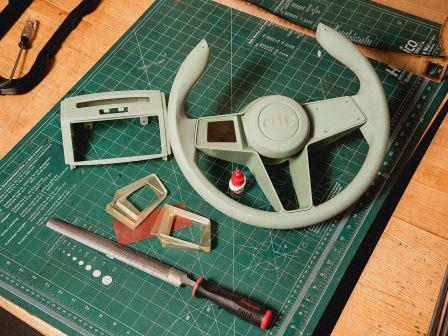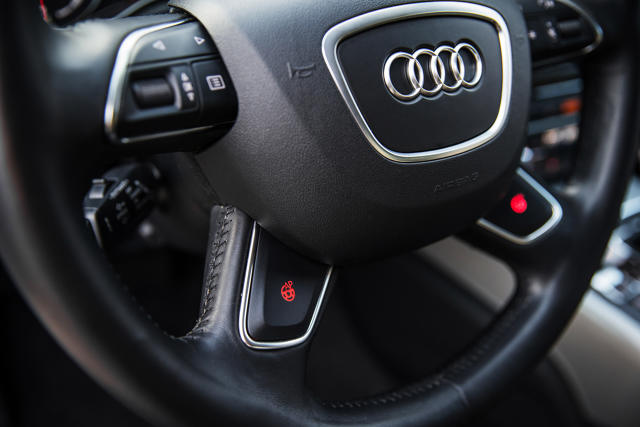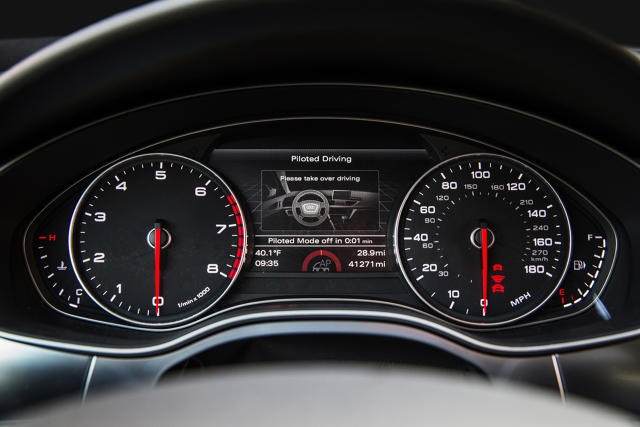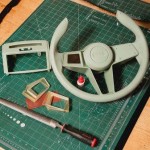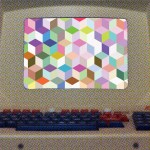the key UX considerations as a way to Make (Or wreck) self sufficient automobiles
In an unassuming research lab, Volkswagen is fixing issues that Tesla and Google have not come just about cracking.
February 2, 2016
We had been rolling eastward throughout the San Mateo Bridge in an Audi A7 at a dutiful 55 miles per hour, and that i used to be riding shotgun accompanied by two of the auto’s engineers. With a sticker worth topping $70,000, the A7 is a elaborate car, but no longer an exotic one along the inventory-possibility-paved highways of Silicon Valley. I seemed round on the drivers around us, knowing they hadn’t a clue about what was once going down right beside them. traffic was once getting thick, as rush hour approached. outdoor the window, the water of the San Francisco Bay used to be a uninteresting inexperienced, like patinated copper, pitted by using tiny waves. A vibrant blue sky. Our automobile’s test driver used to be smiling pleasantly, arms on his thighs, no longer touching the steering wheel in any respect.
Then the car in entrance of us slowed. Our car, sensing this, began to vary lanes progressively. but then came a driver to our left, dickishly racing into our blind spot, chopping us off. I griped to myself about California drivers with their composting and their unvaccinated children and their vestigial flip signals. however the Audi wasn’t . It simply sensed that other car coming, drifted again to middle of our lane, and eased onto the brakes so as not to hit the car in front of us. You wanted to be scared, however it used to be over sooner than you realized it took place. It was once like being pushed with the aid of that uncle who might inform you the best way to continue to exist a snake-chunk or order a roast chicken in seven languages. You relied on what used to be going down, and that was once remarkable: the auto, by means of design, used to be calming me earlier than any worries could floor. this is exactly where so many carmakers have failed.
Amid the drumbeat about driverless cars—Google! Tesla! Apple!—it’s easy to pass over simply how a long way they have come, and how briskly. I’ve requested a couple of people what they think this stuff are able to. The consensus seems to be something a little extra evolved than a far off-managed automobile. maybe just a little like a monorail at Disneyland with out the rail?
this is the truth: automobiles that drive themselves are already arriving to market, one button at a time. we now have vehicles that swerve to keep away from accidents or park themselves. vehicles like these are already wreaking havoc. perhaps one of the vital funniest viral examples you will discover on Youtube is of a bunch of individuals at a automotive dealership, testing out a characteristic on a Volvo that they suppose prevents it from hitting pedestrians. which you can’t see the hapless driver settling in at the back of the wheel, but let’s think about him vast-eyed, bristling with excitement as he prepares to slam on the accelerator. within the foreground stands a guy in a red shirt, his posture giving off this brittle mixture of apprehension and excitement. He’s leaning forward, bracing just a little bit: ready for magic. Holy shit!
the driving force slams on the accelerator. the car doesn’t stop. It plows all through the fellow within the purple shirt, who flips up onto to the hood like a rag doll tossed by way of a pit bull. individuals scream. The digicam spins wildly, forgotten.
Self-riding vehicles went viral once more just lately, when Tesla dropped a $2,500 tool replace on its buyers that promised a brand new “autopilot” function. The movies are attention-grabbing to observe, largely on account of what’s not taking place. There’s one, titled “Tesla Autopilot tried to kill me!” where a man drives with his palms off the wheel for the primary time. He hasn’t changed using with, say, looking at a movie or relaxing—as an alternative, he’s replaced the stress of driving with something worse. He looks on the highway, he seems to be at the wheel, he looks at his palms. He’s scared. And he’s sensible to be scared. His car, unable to realize the lane dividers that guide it, veers into oncoming site visitors. luckily, he snatches the wheel away.
somewhere in between the place we stand now, pissed off at how so much time we waste sitting in traffic, and the future, where we’re driven round by using robots, there might be a whole lot of recent cars. Their success doesn’t simply rely upon engineering. The success is dependent upon whether or not we, the individuals, take into account what some new button in our brand-new car can do. do we guess easy methods to use it, even supposing we’ve by no means used it before? do we belief it? Getting this right isn’t about getting the know-how right—the technology exists, because the Tesla example proved so horribly. The higher challenge lies in making these applied sciences into something we consider—and want to make use of.
In those Tesla movies, the drivers don’t recognize what the car can’t do. It’s no longer telling them. Techies and Tesla boosters had been fast to put blame. Don’t these idiots know how all these items work? Don’t they read the guideline manuals? These are echoes of the least productive trope in computing history, the one who Steve Jobs railed towards: the concept the user is unsuitable, and that we must all bend to the capabilities of a computing device instead of the machines bending to us.
The people having a look terrified in these Tesla movies? That’s now not their problem. It’s a design downside.
How Do You construct trust In A machine?
That Audi A7, code-named Jack, is years far from market. however it already represents thousands of man-hours, with belief being the most beneficial difficulty. (there is a real understatement in this: Audi is owned through Volkswagen, which finds itself embroiled in a scandal over untrustworthy emissions performance. The engineers and designers on this story had no involvement in that.) The individual accountable for fostering belief in a robot car is Brian Lathrop, whose very bland title belies how so much time he spends residing sooner or later. He runs the UX crew at Volkswagen’s little-known Electronics research Laboratory; it can be his workforce which is figuring out how that A7 should work. A Ph.D psychologist by training, California born and raised, Lathrop is burley with close cropped hair like a military sergeant. He speaks with the painstakingly chosen phrases of a scientist, used to sniffing out imprecision. however he is an inventor exceptionally—the co-writer of several patents that may show decisive for self sufficient automobiles.
Twelve years in the past, Lathrop found his job on Monster.com, and even the fellow who hired him didn’t somewhat recognize what he’d be doing there. His first few weeks, the 15 engineers he worked with shrugged, and set him up wiring circuit boards. these days, though he’s just a few years into the fold, Lathrop is nevertheless more experienced than all but a few people on the planet—as a result of up until a couple years ago no person was once pondering via how you could in fact function a automotive that drives itself.
Lathrop lower his enamel at NASA, developing new how to fly planes extra safely. From that experience, he has distilled a “3+1” design philosophy for driverless automobiles, which works its approach through all the ideas he invents. There are three issues an autonomous car has to get proper, plus one: peculiarly, we want to comprehend what mode a automobile is in, whether or not it’s driving itself or now not. The second concept Lathrop calls the coffee Spilling concept: We wish to comprehend what one thing is going to do, before it can be if truth be told accomplished. third, and most likely most critical in fostering belief, is that we wish to understand what the automobile is seeing. And ultimately, we want completely clear transitions when a car takes control, or once we take regulate from a car.
in the case of this explicit A7, these rules had all been compressed into the temporary span of a pair minutes, when the take a look at driver drifted our automobile onto the freeway and then let its computer systems take over the using. It was a decent choreography.

As we merged onto the highway, the car wasn’t ready to take over. First, it had to analyze the lanes, the visitors, and our environment. but then, once we reached a stretch of highway certain as an auto-pilot zone, a small center panel close to the air-conditioning vent blinked to life, with a countdown timer: “5 minutes unless pilot mode on hand.” understand that these rules about fostering belief? It was once telling us what it may possibly do, what was once conceivable, prior to it ever took place.
When the moment came, two buttons on the center hub of the steerage wheel blinked: Press to engage. these two buttons have been impressed with the aid of the well-known missile launching systems the place two keys needed to be grew to become at the related time, to keep away from errors. A brilliant strip of LEDs on the dashboard flashed from orange to blue-green, telling us that the car was once in keep watch over now. It used to be confirming the motion. these colours on the dashboard have been moderately chosen not to evoke our notions of green vs. red and proper vs. fallacious, but fairly, a new symbology. On the one facet, blue-green, a pleasant, unthreatening signpost to evoke calm and steadiness. concurrently the lights shifted, the steering wheel pulled back somewhat and started to waggle through itself left and right, adjusting to the contours of the highway with an eerie precision that appeared nearly human. It was once a moment that was superior to absorb—and then, almost immediately, uneventful.
the pretty bay scrolled previous the window. right through our journey, talking with the test driver, I detected an odd roughly awkwardness. As we chit-chatted, the take a look at driver never stopped staring straight beforehand, as if he was once driving. best he wasn’t riding. I requested him: What, precisely, are you imagined to be doing at the moment? He smiled, as if the query wasn’t his to answer. The supervising engineer, monitoring the experience from a laptop in the backseat, piped up: “the primary three minutes you’re thinking, ‘this is crazy, that is the longer term!’ Then you lose interest.” all of us laughed. however the very fact of the force’s boringness used to be a feat. Boringness implies ease fairly than fear. the driver’s palms weren’t hovering over the wheel ready for one thing bad to happen, and neither had been we. We have been just enjoying the view.
A Ladder of Metaphors
After our trip within the A7, back at the lab, a small army of engineers and project managers had gathered to sing their own praises a new idea—just a concept! they wired, each time we talked—of what the subsequent phase in riding could be. “And now, we wish to disclose something different for you!” stated the challenge chief, Erik Glaser. he is shockingly younger—compared to the many other stone-faced Germans standing round, he gave the impression of the intern: gawky, earnest, carrying jeans, with a chinstrap of facial hair that probably started only a few years ago, around his junior yr of college. however, like his boss Brian Lathrop, his experience suits his existing job to an uncanny level. At Carnegie Mellon, he helped design a robot programmed with an agenda: because it supplied you snacks, it detected what you selected and tried to coax you into more fit picks—”Cookies once more, huh?” It had an LED capable of expressing a delicate frown of judgment. Glaser’s problem then used to be exactly the one he faced now: How do you build a sensible robotic that doesn’t freak individuals out?
Off to the aspect of the garage where their check automotive was regularly parked used to be a black cloth draped over one thing bulky, concerning the size of a sofa. An assistant gently rolled again the cloth: Voila! here was once a simulated dashboard, complete with a slick-taking a look steering wheel. but once I drew close, you might want to see it still bore the scuffs of a working prototype. “this is a working-as-of-remaining-night time prototype,” Glaser said, his eyes purple-rimmed with fatigue. The steerage wheel, a yr and a half in development, had simply been bolted into the simulator hours before.
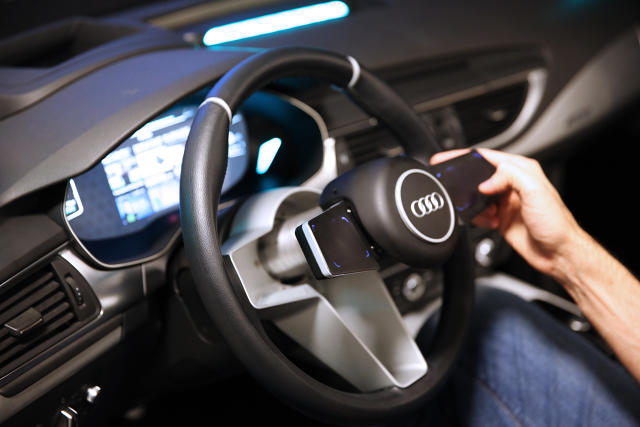
Metaphors enable us to keep in mind new expertise, and this invention was once no totally different. The design guru Don Norman as soon as advised that the controls of a driverless automotive must be a like a horse’s reins: Pull up the slack, and you’re in keep an eye on. let them unfastened, then the automobile is. the point of the metaphor isn’t just keep watch over, but additionally security: With a horse, even when it’s trotting on free reins, you understand that it’s own self-preservation will stop you each from going over a cliff. The steerage wheel idea that I used to be seeing bore a hanging echo of Norman’s previous perception. while you had been driving, you drew the steerage wheel close. but when the automobile was riding, the road wheel receded with the aid of about 7 or 8 inches—like loosened reins, you’ll want to still grasp again the wheel if you happen to needed to take regulate. And similar to loosened reins, the steering wheel, by receding from your seize, in fact informed you it was once the automobile that was once taking over now.
there are thousands of ideas that simply ditch the expertise we’re used to. The Audi example was completely different. Its cleverness lay in seeming so obtrusive—in being a straightforward retrofit of the steerage wheel for the subsequent decade as we get aware of new ways of driving. you’ll find these exchanges going down at all times, to your everyday life.
To take just one instance, in case you use an Apple laptop, you probably seen when the scrolling route of the trackpad changed from shifting a web page down when you scrolled up, to “pure”—which means that when you swipe down, the page strikes down. the previous works like a spyglass would: As you move the spyglass down a web page, the bit you’re studying moves up into view. but pure scrolling is totally different. It’s as should you’ve received the web page to your hand, as a substitute of a spyglass. It’s as should you’re pushing a page upward as you read. the primary metaphor made experience within the era of pcs, when home windows functioned like spyglasses onto the content material of a page. The later metaphor is sensible best with touch monitors, and the concept that the object you up to now concept used to be a screen had in fact develop into one thing like paper. level being, our metaphors for the way expertise trade as we assimilate outdated applied sciences, and adapt to new ones.
you will discover this alternate going down with the steering wheel—itself a metaphor a hundred and fifty years within the making. earlier than the earliest steerage wheels appeared in motorized tractors and sleds, there was the tiller, which used to be in truth a guidance technology borrowed from boats. And on boats, a tiller turns the rudder left. In response, the ship turns proper. therefore, proto–steerage wheels if truth be told moved a automobile within the opposite course that you just steered. however the automobile developed to transform familiar in its own right. The metaphorical reference to boating used to be lost. And so, it became “pure” to turn a wheel right, and have the car actually flip right.
know-how is like that: We don’t ditch what we have now. We repeatedly replace our metaphors, looking for familiar handholds that quietly provide an explanation for how a know-how works. In digesting new technologies, as we climb a ladder of metaphors, each rung may apply the one before. Over time, we discover ourselves further and farther from the rungs we started with, so that we in the end go away them behind, like so many tiller-inspired steerage wheels.
The deeper lesson in all that is that individuals naturally get frustrated when one thing doesn’t do just what they imagined; they get misplaced when things don’t work as assumed. part of the reason the Tesla example used to be so mortifying is that in calling that new characteristic “Autopilot,” Tesla planted an concept within the heads of its users, about what a car driving itself will have to do. They invited drivers to provide their very own ideas about “autopilot,” then despatched them on their approach. And when there used to be a gap between what Autopilot did and the way folks imagined it? Tesla Autopilot tried to kill me.
We demand that new applied sciences don’t only what they promise, but what we think about. We demand that they behave in a method that we can wager, with out ever having used them ahead of. That’s what lies at the back of the mysterious conception of consumer friendliness.
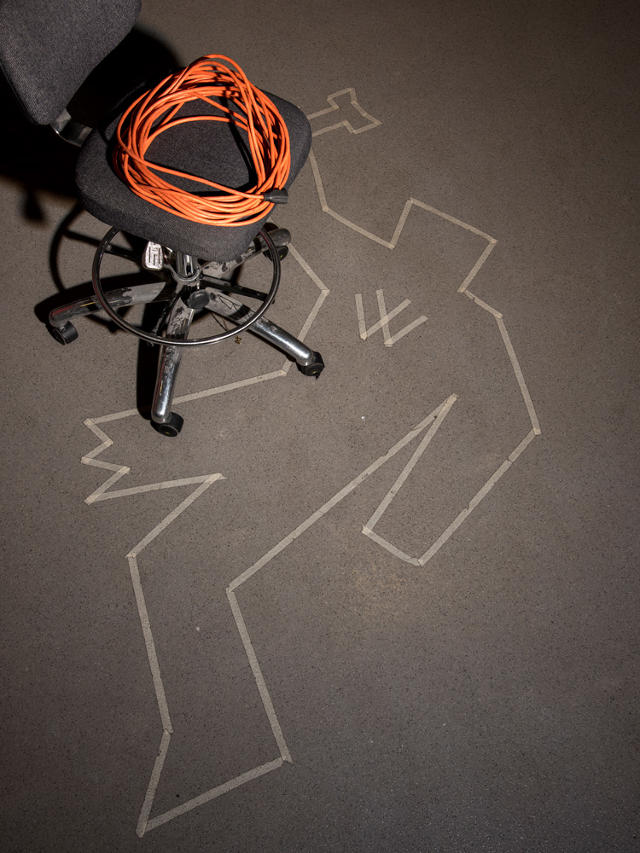
How What we think of individuals Influences What we predict of Machines
We’re only some years from the naive assumption that self sufficient driving would merely be a automotive with an auto-pilot button—certainly, that’s most probably what most people picture. “Three or four years ago, once we began working on human-desktop interplay concepts for self-using autos, no one considered it,” Lathrop stated. but as he and his friends started to noodle over the problem, the more hairy it became. Lathrop, in particular, was once keenly attuned to one easy issue that has bedeviled us ever given that we began to fly the friendly skies.
recollect that first principle that Lathrop laid out for designing autonomous automobiles—that the driver has to know whether the automobile is using itself. That harks to almost certainly the oldest dictate in interface design; mode confusion causes 90% of airplane crashes, and that perception helped invent the field of human-laptop interplay. think about all of the instances you’ve heard information studies about a pilot being perplexed about whether or not the flaps of the wings have been down, or whether to auto-pilot was correctly set. when you’ve ever failed to understand that your automotive was once in park while you hit the accelerator, otherwise you’ve ever tried typing into the wrong window on your computer display, you’ve been a victim of mode confusion.
but Lathrop factors out that mode confusion in a automotive is in reality even more menacing than in a aircraft—whereas pilots have a whole lot of miles and lots of minutes to react to problems, drivers are confronted with dozens of issues each minute. moreover, drivers, not like plane pilots, aren’t specialists at riding. The unfold in abilities and instincts among us is so huge, it’s somewhat wonderful that we’re loopy enough to power in any respect.
this is the reason the steerage-wheel thought is suave. In solving a simple drawback—that of fixing the radio station whereas the auto was driving itself—it helped solve a bigger problem: That of telling the motive force, simply and intuitively, that the automobile used to be using itself. Design is like this: every now and then, you remedy one downside and end up fixing a bunch of others down the line. other times, one answer seems to create more problems that it solves. That’s the adaptation between just right design and bad.
talking to Lathrop, hearing all the years of analysis and care piled into every detail, it all obtained to feel almost comically sophisticated. When new considerations crop up after each different one is solved, where’s the top? but it seems that there’s a more basic solution to body our expectations of machines, one who’s extra acquainted and straightforward to snatch: Our expectations of machines are, to a startlingly consistent level, neatly mapped to our expectations of exact human beings.
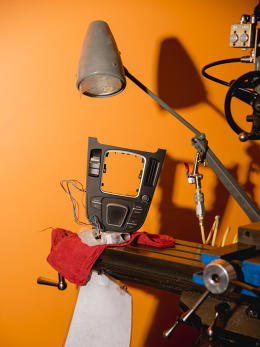
believe what happens when you’re riding on your automobile, come to a stoplight, and then pull out your cellphone to check a textual content message. all of us comprehend it’s mistaken, but we’ve all done it anyway. by myself, you would not think carefully about it. but when you’re with a friend, she’d be good to scold you: “pay attention the road!” possibly you’d protested that you are paying attention, that you just comprehend what’s going on. however your buddy can’t recognize that. She feels endangered as a result of she doesn’t be aware of what to anticipate of your next move on the highway. She feels endangered as a result of she doesn’t be aware of that you simply’ve taken in all the knowledge that she is—who’s crossing the highway, how lengthy it’s been since the mild turned, the automobile that’s simply pulled up alongside you. regardless of how smartly they understand each different, individuals who face a shared danger are constantly checking who knows what, and what to do subsequent.
it is no completely different with a computing device. the auto additionally has to inform both the motive force and the rider about what its sensing. to unravel that downside, the A7 displays you a map of your atmosphere, as the car sees them: Outlines of the other cars on the road, shown on a simple, stripped down show. On the one hand, this doesn’t appear to be new data. finally, it’s purely a crude representation of what you will discover simply by looking out the window. however in reality, the show is telling you that the car sees what you see—and then some. There’s a screen that tells you what the subsequent transfer will be—”left flip”—with a countdown timer except it happens. simple because it sounds, that bit of knowledge way the adaptation between feeling like you’re taking a experience, and feeling like you’ve been taken hostage.
The feel of security you get from that’s akin to using in a automobile, looking over, and in view that the motive force has each palms on the wheel, eyes ahead. She’s using her turn signals, checking her blindspots. We’re constantly testing the individuals around us, to see if they see what we do, to bet whether or not they comprehend what we all know. Our expectations are not any totally different if our accomplice is a automobile, riding itself.
The culture Hidden in a automobile’s habits
just a few months in the past, in an empty, nameless parking zone, under a big white tent, the UX researchers at Volkswagen’s UX lab gathered to unravel an issue that no person used to be serious about. This used to be an experiment, and the white tent was once within the title of science: To keep an eye on how the light that spilled across the barebones side road intersection they’d created in a single day. there were stop signs and crosswalks and lanes. There used to be an Audi A7 idling just beyond the intersection, with its windows blacked out so that no-you possibly can see inside of—in order that no person may see there wasn’t a driver inside of. but the car wasn’t what was once being tested. relatively, it was once the bystanders who’d been rounded up at random, to test how they’d behave in a situation nearly none of us have ever considered earlier than: When a automobile pushed by using a computer pulls as much as a stoplight, what makes you feel safe enough to actually move the street?
only a few individuals within the tribe of geeks learning autonomous cars had given a lot concept to the difficulty. there were cracks, because of this: Out on the streets of Mountain View, some clever bike rider realized that by means of pumping his brakes, he might tease considered one of Google’s driverless vehicles right into a standstill. The Audi team, for its part was humble enough to assume: We don’t actually know how individuals will behave. on the extreme, you want to imagine terror—say if the auto behaved so erratically that individuals raced across the intersection with their breath held. but as a substitute, something stranger took place: folks saw the car, and blithely stepped in front of them as if nothing were amiss. “i believed individuals can be conservative,” Glaser said. “individuals were in fact fearless.”

The fearlessness used to be an unforeseen outcome of an awfully nuanced detail of the car. even though the Audi staff had loaded the cars with artful outward displays telling pedestrians they could cross the street, it seems that the pedestrians had been so trusting because the car behaved respectfully. It got here to a sluggish, measured cease prior to it reached an intersection, similar to a accountable human driver would. people crossed confidently because the automotive was once behaving in a socially suitable approach. With that conduct comes a slew of mores: that you’re not going to all at once gun the engine, that you’re now not a psycho out to do hurt. “The physical driving behavior of the auto is in truth its personal human-desktop interface,” says Glaser.
vehicles are only one instance of the overall fact that there’s a tradition to the way in which the whole thing around us behaves. This insight offers two, forking choices. we can ignore it at our peril, as Tesla did. yet the Silicon Valley mindset of just losing beta assessments upon an unsuspecting populace could be now not handiest naive, but in addition counterproductive. finally, our first impressions always color our willingness to check out again.
on the other hand, we can defer to what we don’t comprehend concerning the culture of objects that are living around us. we will recognize that the key to making us all comfortable with the future lies in appreciating all of nuances of what we already have already got—in realizing, for example, that the best way a automobile pulls up to a curb is an interface all its personal. we can watch exact people, in hopes of constructing things more humane.
As new applied sciences replace human tasks, they’re going to need to behave in ways in which we are able to relate to. It’s not enough to make a dashboard easy to use, or straightforward to read. And whereas we don’t need a dashboard to have a full-blown character, it’ll need to have persona traits. It’ll want to be calming, communicative, or useful, as the placement demands.
Glaser, the younger designer inventing the future of using, muses about just how long it may well be until totally self sufficient vehicles arrive in our driveways. “We’re bootstrapping this know-how,” he says. “The gaps will get stuffed in. but we need handholds along the best way.”
related: Google And Uber assume Driverless Taxis Are definitely A factor. Do You?
All photographs (until otherwise referred to): Damien Maloney for fast firm
quick company , learn Full Story
(57)

